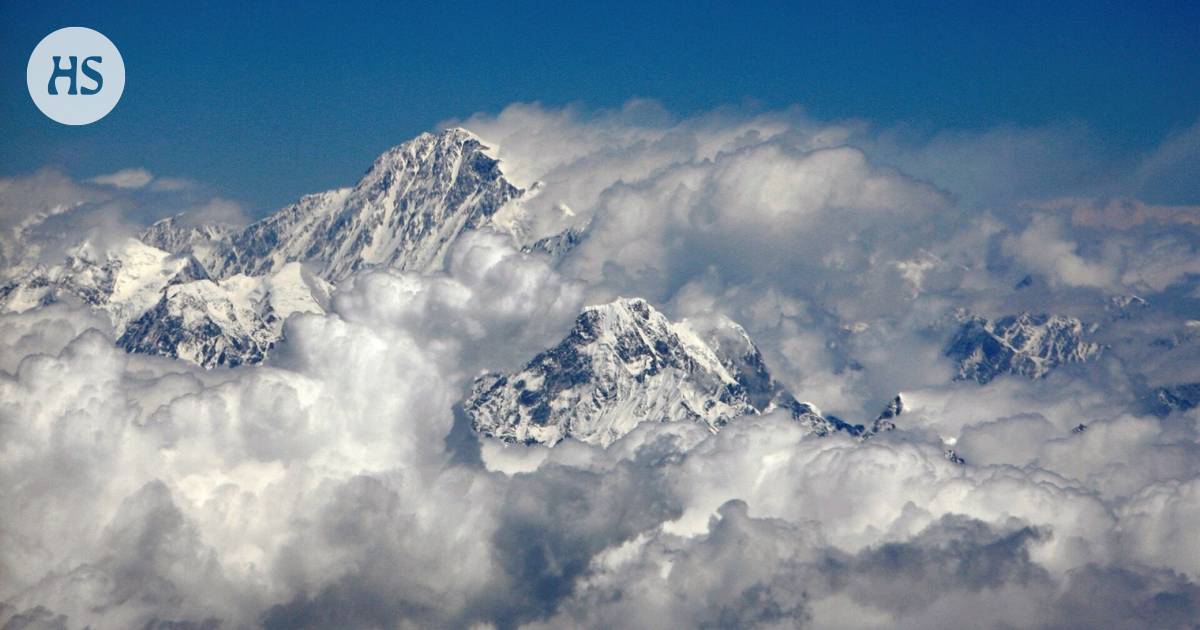Geography|According to estimates, Mount Everest has grown between 15 and 50 meters.
Himalayan located in the mountains, Mount Everest is the highest mountain in the world, rising to 8.85 kilometers above sea level.
The entire mountain range continues to grow, but there is something extraordinary about the growth of Mount Everest. It’s growing more than the rest of the mountain, and scientists now think they’ve figured out why, Reuters news agency reports.
Mount Everest has grown approximately 15 to 50 meters, due to a change in the regional river environment. Scientists estimate that the Kosi River merged with the Arun River about 89,000 years ago, which has resulted in the mountain rising by about 0.2 to 0.5 millimeters per year.
Earth uplift refers to the fact that land masses rise in the earth’s crust layer when the weight of the surface decreases. The outermost layer of the Earth floats on top of the bottom layer, which consists of hot, semi-liquid rock.
In this case, the merging of the rivers led to accelerated erosion, which has carried with it large amounts of rock and soil, reducing the weight of the area next to the mountain. The main canyon of the United Rivers is located about 45 kilometers east of the mountain.
“When a heavy load, such as ice or rock formed by erosion, is removed from the Earth’s crust, the ground beneath it slowly rises in return, just as a boat rises in water when its cargo is unloaded,” geologist Jin-Gen Dai explains to Reuters.
In Pekingese Dai, who is doing research at the China University of Geoscience, is one Nature Geoscience – about the leaders of the research published in the scientific publication. Researchers estimate that about 10 percent of the mountain’s rate of rise is due to land uplift caused by rivers.
The geographical phenomenon in question is not unique only to the Himalayan region, but also applies to Finland.
“The classic example is in Scandinavia, where the land is still rising in response to the melting of the thick ice sheets that covered the area during the last ice age. This process continues today, affecting beaches and landscapes thousands of years after the ice recedes,” says Dai.
Was involved in the group that studied the growth of Mount Everest Adam Smith says that the uplift of the mountain as a result of the phenomenon is faster than the wear and tear caused to the mountain by erosion. Lhotse and Makalu in the Himalayas also grow as a result of the same process.

GSO188: Tempat Terbaik bagi Penggemar Slot Online di Indonesia | ajitblog
touchbase.id
Certificate verification problem detected
christelwilliamson – Our Education Q&A
opendata.agrinio.gov.gr
Stock Market | FinancialContent Business Page
Temukan Keseruan Togel dengan HK Prize – UK Tales | United Kingdom Tales
ComplaintCategories – All Items
rc3gps.com
efg.edu.uy
lenorahooker lenorahooker's Profile page
Stock Market | FinancialContent Business Page
idaliaguerrero | LibraryThing | LibraryThing
articlement.com
Certificate verification problem detected
Rasakan Deluna4D: Pusat Perjudian Daring Pilihan A by ivaarellano on DeviantArt
Domtoto: Togel Macau Terpercaya Yang Menghadirkan Keseruan Dan Peluang Menang – ameamericanamdavadi
touchbase.id
mistyflint – Profile – Carlisle and District Model Aero Club ForumCarlisle and District Model Aircraft Club
Exploring Flower Bouquets: Custom Designs and Unique Arrangements – kemuwiki
uiupdate.ui.ac.id
Faustoshaffer's Profile
About loviesparks | DeviantArt
Peacegen
carolanncope – Users – TRCA Open Data
deluna4d: Pilihan Utama Anda untuk Perjalanan Perjudian Daring…
datos.estadisticas.pr
Temukan Bandar Togel domtoto: Tempat Perhentian Lotere Terbaik Anda – donnalongpiano
stillsurge.com/news/canadian-online-casinos-rng-ssl-and-rtp-fair-play-technologies-2024-update/484835
Sistem Keamanan Tiara4D: Perjudian Slot Online yang Aman – cruisenewser